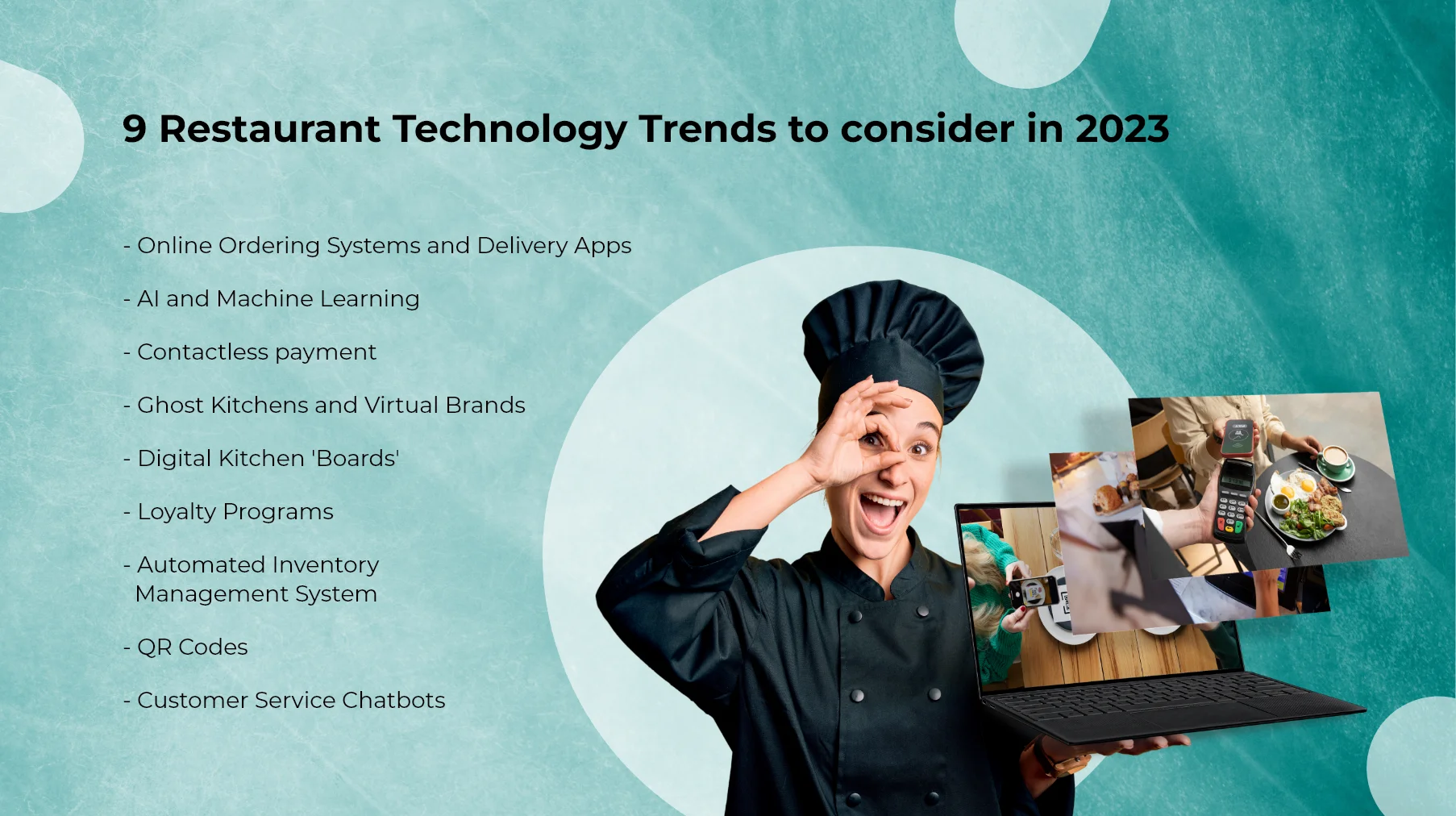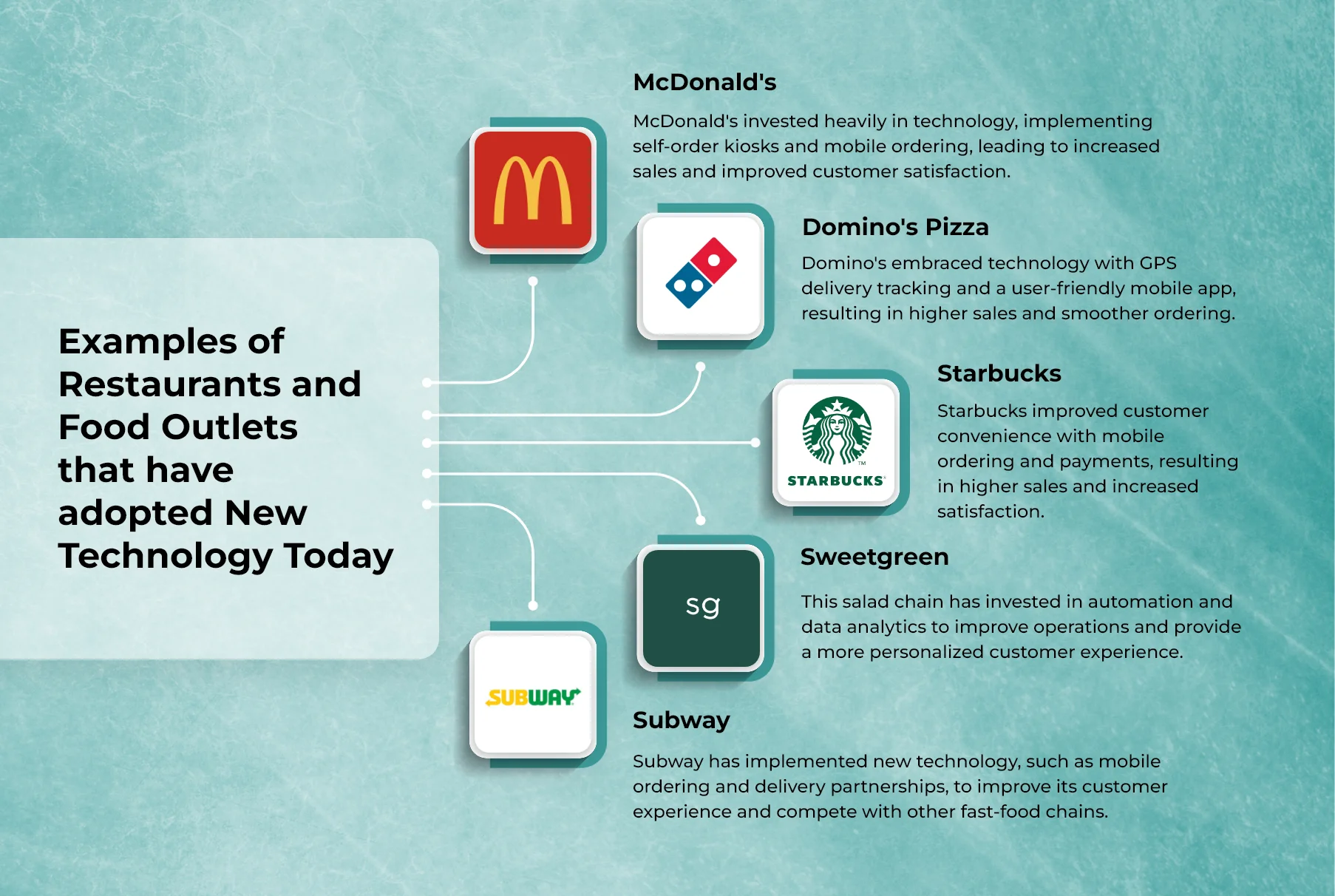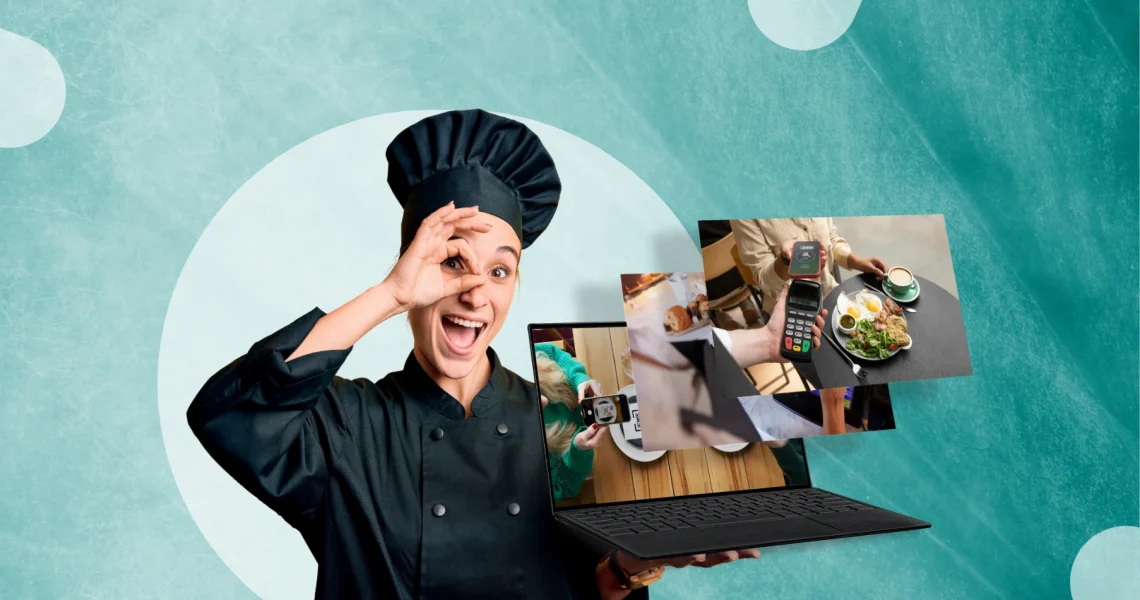9 Restaurant Technology Trends to Consider in 2023
As the restaurant industry shifts more and more to delivery, new creative food service tech is emerging to help restaurant businesses thrive.
To improve the customer experience and remain competitive, restaurant owners must embrace modern restaurant technologies. Restaurant owners will need to continue to adapt to this ever-changing landscape for their own operational efficiency, whether it's tapping into new revenue streams, integrating contactless delivery systems, navigating new food and beverage trends, or leveraging smart technology for restaurants.
From renewed AI dreams to optimizing kitchen operations and providing personalized experiences, there are numerous ways for restaurants to use technology to improve their offerings, optimize their operations, and raise customer satisfaction.
In this post, we'll look at some of the top restaurant technology trends for 2023.

1.Online Ordering Systems and Delivery Apps
Given the vulnerability of restaurants to regulatory limits and strict sanitary rules, online food ordering, and “no-touch” home delivery services remain a vital element of the restaurant industry. And there are no signs of this trend abating as people become accustomed to ordering food online and having it delivered right to their door.

Third-party food delivery services like DoorDash, UberEats, and GrubHub will continue to be important tools for businesses who don’t have in-house food ordering and delivery services. However, if more customers continue to prefer ordering directly from restaurants, we’ll see more restaurants follow the path of major fast-food chains and invest in developing their own integrated apps and online platforms. Despite the distance, digital tools enable restaurants to create close connections with their customers.
2.AI and Machine Learning
After the release of OpenAI's generative AI chatbot ChatGPT in late 2022, AI has become the buzzword of 2023. While AI has seen smaller hype cycles come and go, the advent of large language models (LLMs) has resulted in greater public awareness than the previous year. Different AI and machine learning solutions can be used, some of which the restaurant industry has already integrated in recent years.
According to QuBeyond's analysis, interest in AI and machine intelligence has grown significantly in the last year, rising from 13% to 70% of businesses, making it the top innovation enterprise restaurant brands are pursuing in 2023. Some of the important restaurant operational areas ripe for AI include:
Chatbots
Following up from ChatGPT and LLMs, chatbots are the most obvious use and have already been adopted by many companies. Customers can use messaging systems to communicate with chatbots to navigate menus, ask questions, place orders, and even pay for food. Look for chatbots to be integrated into more areas, such as table bookings, collecting user feedback, and customer support.
Voice ordering is available
AI-powered voice ordering systems, like chatbots, allow clients to obtain basic customer care using natural language speech commands, giving another channel for customer engagement and reducing labor time. While some larger chains, such as Chipotle, are already using AI voice assistants to take orders, speech technology still faces substantial challenges, such as effectively processing diverse accents and dialects, integrating with loyalty programs, and more.
Dynamic pricing
A pricing strategy that employs automation to offer different rates based on factors such as time of day, day of week, customer information, and sales volume, is widespread practice in the hospitality and travel industries.
Companies such as Sauce, a dynamic pricing startup that employs machine learning to change menu prices on delivery orders, are enjoying success. Another area where AI might aid restaurant margins in the face of rising costs is dynamic pricing.
The promise of AI and machine learning for restaurants extends beyond these areas, but it's still too early to tell how significant the impact will be.
3. Contactless Payment
In the restaurant industry, contactless payment is becoming more common. This technology allows diners to pay for food using a smartwatch, smartphone, or smart card via an app or touchless device, in addition to placing an order online.
Contactless payment had been steadily gaining traction in the global restaurant business before the pandemic, but it became the new normal.

Contactless payment is not only quick and convenient, but also hygienic and safer because no cash hand is required, and no human interaction is required. If restaurants don't want to fall behind, it's important to invest in a mobile and digital payment solution.
4. Ghost Kitchens and Virtual Brands
Ghost kitchens, also referred to as virtual or dark kitchens or restaurants, have become one of the fastest-growing new food service outlets since the pandemic. Established businesses rushed to test them out, while upstart brands received major funding in 2020 and 2021 but flaws soon appeared in the popular strategy. Low unit quantities and sales, operational issues, and safety and permitting issues have hampered the segment to the point where some question the model's efficacy.
According to the National Restaurant Association's 2023 State of the Industry Report, restaurant operators' forecasts for the future of ghost kitchens in 2023 are firmly divided. Approximately one-third of operators expect these businesses to become more common, while the same amount expects them to become less popular.
Experimentation with ghost kitchens and virtual brands will continue, but the industry will likely be consolidated into the most successful companies.
5. Digital Kitchen 'Boards'
As the number of online orders increases, restaurants must find new ways to streamline their operations. Kitchen display systems (KDS) are digital menu boards for kitchen staff that assist restaurants in streamlining back-of-house operations. It eliminates the need for your workers to constantly walk back and forth between the front-of-house and the kitchen to receive customer orders and confirm whether such orders are ready.
A kitchen display system is directly linked to the restaurant's point-of-sale (POS) system and begins working as soon as an order is placed. The screen automatically displays orders based on priority and identifies any specific dietary preferences. It also checks inventories and tracks meal delivery times to alert users when an item is out of stock. Digital kitchen displays promise a more sustainable kitchen operation by assuring greater communication, clearer workflows, and accuracy.
6. Loyalty Programs
With some customers cutting expenses due to inflation, restaurant operators are investing in loyalty programs to enhance customer spending and encourage repeat business. Customer retention is far less expensive than customer acquisition, with research suggesting that retaining a customer is anywhere from five to twenty-five times less expensive than gaining a new one, therefore, focusing on customer loyalty makes sense.
Loyalty programs are also vital to boost direct restaurant orders in the face of competition from third-party marketplaces.
According to a PYMNTS study of 2,000 US consumers, 72% of those who prefer to use direct ordering channels had used loyalty programs, while 45% of frequent first-party app and website users cited better access to discounts or rewards as a feature that influenced their preferences for these first-party channels.
There is still room for development. Another PYMNTS study discovered that only 30% of restaurant customers had used a reward program. The growth of digital loyalty programs is a primary goal for many brands in 2023. Brands must, however, expand their loyalty programs while minimizing costly abuse and fraud.
7. Automated Inventory Management System
Automated inventory management software assists restaurants in tracking food and beverage stock, anticipating quantities, and scheduling reorders more efficiently and quickly. Including this software through your work process helps reduce food waste, which is estimated to cost the hotel industry $100 billion annually. Companies like Kitro use artificial (AI) to help restaurants not just minimize food waste but also run efficiently and sustainably. Partnership with programs such as Too Good to Go can also help restaurants avoid wasting excess food by making it available to the user as a meal deal.
Let’s be honest: initiatives that save time and money while also ensuring environmental sustainability are a no-brainer, especially since sustainability is at the top of the global agenda.
8. QR Codes
QR codes are slowly replacing restaurant menus. Already popular in mobile-first societies such as China, this restaurant technology is steadily making its way around the world, with more and more restaurants adopting it. QR downloads have increased by more than 750% in the last few years.
Auto-scanning barcodes enable customers to access online menus, purchase, and pay for their orders by conducting a simple scan in the current contactless era. This technology, which does not require the download of an app, plays a key role in assisting restaurants with contact tracing and is currently mandatory in some regions of the world. QR code technology will be vital in 2023 and beyond since it provides numerous benefits to restaurants at a low cost.
Contactless payment using apps and QR codes can enhance your delivery process by:
- Reducing customer wait times
- Enhancing customer satisfaction
- Letting out opportunities for exceptional service
Contactless payment, in addition to speeding up the checkout process, can help to reduce germ circulation in the restaurant and kitchen when waitstaff handles cash and credit cards. Contactless payment technology, on the other hand, can make your customers and employees feel more at ease—while also reducing trips to the sink.
Owners can also maintain hygiene by installing air purification technology, which filters and disinfects the air.

9. Customer Service Chatbots
Customer service is still an important aspect of your business model and should be included in your restaurant business plan. Restaurant operators, fortunately, can improve customer service by including a chatbot in the restaurant’s website infrastructure.
With the evolution of AI technology, chatbots can be used to:
- Intuitively guide clients through a website
- Take customer orders
- Offer special incentives
- Answer customer questions
Many chatbots' user-friendly interfaces provide users with exceptional service in a flash, fostering customer loyalty and encouraging more visits.
Chatbots can be used by restaurants to reduce the number of incoming calls, giving staff members more time to respond to in-house patrons and give them an enjoyable visit.
